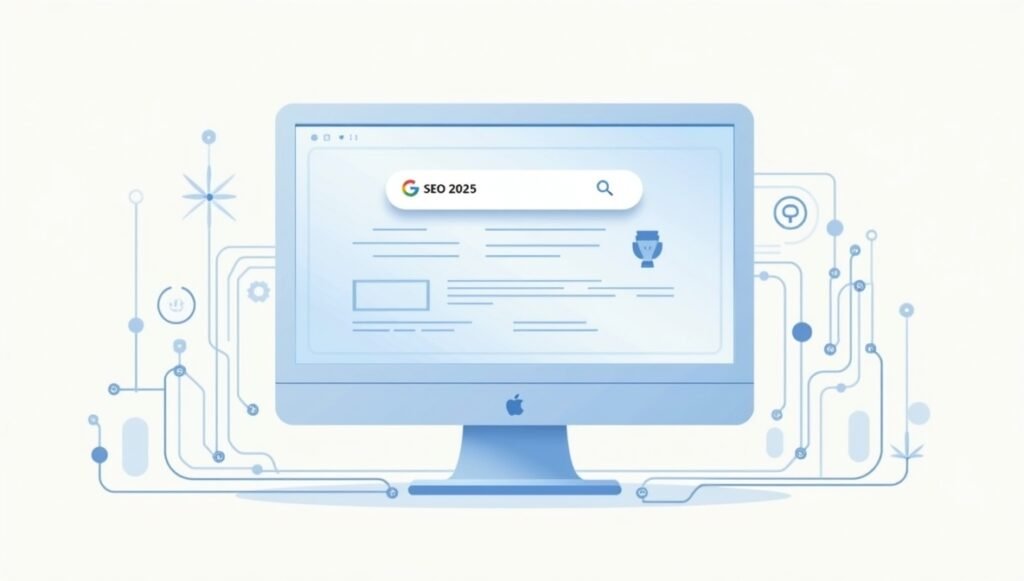In the fast-paced world of the internet, web design evolves at lightning speed. A website that looked modern a year ago might seem outdated today. As we enter 2025, stunning visuals, seamless user experience, and fast loading speeds are no longer optional—they’re essential.
To keep your brand relevant, professional, and engaging online, it’s time to embrace the latest web design trends. Whether you’re a business owner, freelancer, or part of a growing startup, these cutting-edge ideas will help you create a future-proof website that ranks higher, converts better, and delights visitors.
Let’s dive into the top web design trends for 2025 that will keep your website ahead of the curve.

1. AI-Powered Design Elements
AI is revolutionizing the way websites are designed and function. In 2025, expect to see websites using AI-driven design tools to customize layouts, generate content, and even provide real-time UX improvements.
Examples of AI in Web Design:
- AI chatbots with personalized responses.
- Automated image optimization.
- Dynamic content adjustments based on user behavior.
Pro Tip: Use tools like Adobe Firefly or Uizard for AI-assisted web design to save time and boost efficiency.
2. Dark Mode and Low-Light UI
Dark mode isn’t just a trend anymore—it’s becoming the standard design option. With many users preferring low-light interfaces, incorporating a dark theme toggle can enhance accessibility and aesthetics.
Why It Works:
- Reduces eye strain.
- Looks modern and sleek.
- Saves battery on OLED devices.
SEO Tip: Make sure your dark mode version maintains readability and loads just as fast as the light version.
3. Minimalist Yet Bold Typography
2025 is the year of clean layouts paired with bold typography. Fonts are now more than just readable—they’re part of the branding.
Design Tips:
- Use large, statement-making headlines.
- Keep body fonts clean and simple (e.g., Open Sans, Roboto).
- Combine typography with white space for a high-end feel.
4. Interactive 3D Elements
With faster internet and better browsers, 3D design in web interfaces is gaining popularity. These elements add depth, realism, and interaction to your site.
What You Can Do:
- Add interactive product demos.
- Use 3D scroll animations.
- Enhance storytelling with animated environments.
Pro Tip: Tools like Spline, Three.js, and Rive make 3D animation integration easier than ever.
5. Micro-Interactions and Animation
Micro-interactions are small animations triggered by user actions, like hovering, clicking, or scrolling. These subtle design elements create a sense of engagement and make the website feel alive.
Popular Micro-Interaction Ideas:
- Button hover effects.
- Scroll-triggered content reveals.
- Animated progress bars.
Benefit: Increases user engagement and session time, both of which help SEO rankings.
6. Voice-Activated Interfaces
Voice search is growing fast, especially with smart devices becoming common. In 2025, adding voice-activated commands or voice navigation to your website can provide a hands-free experience.
Use Cases:
- Search functionality via voice.
- Hands-free navigation on mobile.
- AI chatbots responding to voice prompts.
SEO Angle: Optimize your content for voice search keywords like “how to”, “best way to”, or “near me”.
7. Personalized User Experiences
Personalization has moved beyond just using a visitor’s name. Now, websites can adapt content, layout, and offers based on user behavior, location, and preferences.
How to Implement:
- Use cookies to track user behavior.
- Show relevant content or products based on past visits.
- Offer personalized pricing or promotions.
Tools to Use: HubSpot, Optimizely, and Dynamic Yield.
8. Sustainable Web Design
As digital carbon footprints become a hot topic, many brands are moving towards eco-friendly web design. This means reducing unnecessary code, compressing images, and choosing green hosting providers.
Key Practices:
- Optimize image and video sizes.
- Use fewer animations and scripts.
- Choose servers powered by renewable energy.
Impact: Improves site speed, user experience, and aligns your brand with sustainability values.
9. Mobile-First and Thumb-Friendly Navigation
With over 70% of web traffic now coming from mobile, mobile-first design isn’t just a best practice—it’s a necessity. In 2025, designs will focus on thumb-friendly navigation, vertical scrolling, and touch gestures.
Design Considerations:
- Avoid tiny buttons or complex menus.
- Stick to one-column layouts.
- Use sticky navbars and big CTAs.
SEO Boost: Google favors mobile-first indexing, so your design must load fast and look great on phones.
10. Neumorphism 2.0
Neumorphism—a soft, shadowy UI style—is getting a makeover. This year, expect to see Neumorphism 2.0, which combines soft shadows with brighter colors and improved accessibility.
How to Use It:
- Enhance call-to-action buttons.
- Create stylish card designs.
- Maintain accessibility with proper contrast and focus indicators.
Final Thoughts
As a digital marketer and web designer, staying updated with modern web design trends is crucial. In 2025, success is about more than good looks. Your website must be fast, responsive, interactive, and smart.
Implementing these trends will not only enhance user experience but also boost your search engine rankings, brand perception, and conversion rates.
Follow Us on Instagram : Deepanshu Bisht


